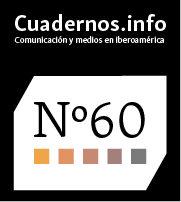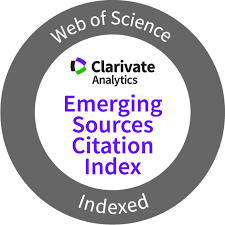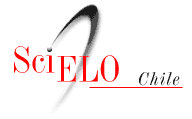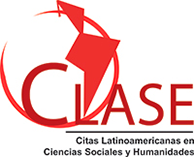Coverage of expert women in the press:
framing of female researchers in education in Chile
DOI:
https://doi.org/10.7764/cdi.60.76738Keywords:
framing, academy, gender, coomunication, content analysis, ChileAbstract
This study analyzes the presence of female academics and researchers in education and the framing of their figure in Chile. Using framing theory and quantitative content analysis of 295 news items published between 2018 and 2022, in the Education section of El Mercurio (a newspaper considered a reference for decision-makers), five frames were identified: expert, author of knowledge production, human interest, caregiver and commentator. The results indicate that there is not a significant difference in the frequency of appearances in the news of women experts in the field compared to men, although they are represented to a lesser extent as main sources. The predominant frames for women were those of caregiver and commentator, especially related to issues of schooling, early education and the pandemic. The frame in which women experts were least present was that of knowledge producer, defined as the one in which they report the results of their own studies.
Downloads
References
Acker, S. & Wagner, A. (2019). Feminist scholars working around the neoliberal university. Gender and Education, 31(1), 62–81. https://doi.org/10.1080/09540253.2017.1 296117
Antezana Barrios, L. & Lagos Lira, C. (2014). El noticiero televisivo como dispositivo de disciplinamiento social: un análisis de la cobertura de femicidios en Chile (Television News Programs as Tools of Social Discipline: an Analysis of Femicides’ Coverage in Chile). Comunicación Y Medios, (30), 26-40. https://comunicacionymedios.uchile.cl/index.php/RCM/article/view/30880
Aladro Vico, G., Padilla Castillo, P., Requeijo Rey, D. J., Semova, J., García Agustín, J., García Nieto, M. T., & Viñarás Abad, M. (2014). La presencia y representación de la mujer científica en la prensa española (Presence and representation of female scientists in the Spanish press). Revista Latina De Comunicación Social, (69), 176-194. https://doi.org/10.4185/RLCS-2014-1007
Álvarez-Monsiváis, E. (2021). De primera dama a candidata presidencial: masculinización en la cobertura periodística de mujeres políticas (From First Lady to presidential candidate: masculinization in news coverage of female politicians). Cuadernos.info, (47), 26–52. https://doi.org/10.7764/cdi.47.1868
Araneda-Guirriman, C., Pedraja-Rejas, L., & Sepúlveda-Páez, G. (2023). Brechas de género en la productividad científica: una aproximación desde Chile (Gender Gaps in Scientific Productivity: an Approach From Chile). Pensamiento Educativo, Revista De Investigación Latinoamericana (PEL), 60(1). https://doi.org/10.7764/PEL.60.1.2023.7
Ardèvol-Abreu, A. (2015). Framing o teoría del encuadre en comunicación. Orígenes, desarrollo y panorama actual en España (Framing theory in communication research. Origins, development and current situation in Spain). Revista Latina De Comunicación Social, (70), 423 - 450. https://doi.org/10.4185/RLCS-2015-1053
Asociación de Agencias de Medios. (2019). Overview prensa anual 2019 (2019 annual press overview). https://bit.ly/3vbccXt
Bordón, P., Canals, C., & Mizala, A. (2020). The gender gap in college major choice in Chile. Economics of Education Review, 77, 102011. https://doi.org/10.1016/j.econedurev.2020.102011
Cabalin, C. (2013). Framing y políticas educacionales: Los medios como actores políticos en educación (Framing Educational Policies: The media as political actors in education). Estudios sobre el Mensaje Periodístico, 19(2), 635–647. https://doi.org/10.5209/rev_ESMP.2013.v19.n2.43463
Cabalin, C. & Antezana, L. (2016). La educación en portada: la visualización de la política educacional en la prensa (Education cover page: The visualization of educational policy in the press). Cuadernos.info, (39), 195–207. https://doi.org/10.7764/cdi.39.914
Cordano, M. (2019, July 8). La participación igualitaria de hombres y mujeres debería promoverse desde el colegio (Equal participation of men and women should be promoted at school). El Mercurio, p. A8.
Criteria. (2022). Percepción de la presencia de las mujeres en los medios de comunicación en Chile (Perception of the Presence of Women in the Media in Chile). https://catedramujeresymedios.udp.cl/cms/wp-content/uploads/2022/08/Reporte-deprensa_UDP-Mujeres-y-Medios.pdf
CNTV. (2022). Encuesta a denunciantes. Mujeres y televisión abierta (Complainant survey. Women and open television). https://www.cntv.cl/wp-content/uploads/2022/03/CNTVEncuesta-Mujer-y-TV-abierta.pdf
Code, L. (2014). Ignorance, Injustice and the Politics of Knowledge. Feminist Epistemology Now. Australian Feminist Studies, 29(80), 148-160. https://doi.org/10.1080/08164649.2014.928186
Coe, K. & Kuttner, P. J. (2018). Education Coverage in Television News: A Typology and Analysis of 35 Years of Topics. AERA Open, 4(1). https://doi.org/10.1177/2332858417751694
Entman, R. M. (1993). Framing: Toward clarification of a fractured paradigm, Journal of Communication, 43(4), 51–58. https://doi.org/10.1111/j.1460-2466.1993.tb01304.x
Fardella Cisternas, C., Corvalán-Navia, A., García-Meneses, J., & Chiappini Koscina, F. (2021). Ni extranjeras, ni secretarias: discursos de las científicas chilenas sobre el trabajo académico (Not Foreigners or Secretaries: Discourses of Chilean Female Scientists on Academic Work). Pensamiento Educativo, 58(1), 1-13. https://doi.org/10.7764/PEL.58.1.2021.11
Gallur Santorun, S. & García Orosa, B. (2019). La presencia de la mujer en las informaciones de los cibermedios europeos de España, Italia, Gran Bretaña, Portugal y Francia (The presence of women in the information of Spanish, Italian, British, Portuguese and French digital European media). Revista Latina De Comunicación Social, (74), 403-417. https://doi.org/10.4185/RLCS-2019-1337
Guarino, C. M. & Borden, V. M. H. (2017). Faculty service loads and gender: Are women taking care of the academic family? Research in Higher Education, 58, 672–694. https://doi.org/10.1007/s11162-017-9454-2
Hallgren K. A. (2012). Computing Inter-Rater Reliability for Observational Data: An Overview and Tutorial. Tutorials in Quantitative Methods for Psychology, 8(1), 23–34. https://doi.org/10.20982/tqmp.08.1.p023
Hill Collins, P. & Bilge, S. (2019). Interseccionalidad (Intersectionality?). Ediciones Morata. Humprecht, E. & Esser, F. (2017). A glass ceiling in the online age. Explaining the underrepresentation of women in online political news. European Journal of Communication, 32(5), 439–456. https://doi.org/10.1177/0267323117720343
Kuzmanic, D., Valenzuela, J. P., Claro, S., Canales, A., Cerda, D., & Undurraga, E. A. (2023). Socioeconomic disparities in the reopening of schools during the pandemic in Chile. International Journal of Educational Development, 100, 102805. https://doi.org/10.1016/j.ijedudev.2023.102805
López Rabadán, P. (2010). Nuevas vías para el estudio del framing periodístico. La noción de estrategia de encuadre (New ways for the journalistic framing research. The notion of framing strategy). Estudios sobre el Mensaje Periodístico, 16, 235-258, https://revistas.ucm.es/index.php/ESMP/article/view/ESMP1010110235A
López-Rabadán, P. (2021). Framing Studies Evolution in the Social Media Era. Digital Advancement and Reorientation of the Research Agenda. Social Sciences 11(1), 9. https://doi.org/10.3390/socsci11010009
Lünenborg, M. & Maier, T. (2015). Power Politician’ or ‘Fighting Bureaucrat’: gender and power in German political coverage. Media, Culture, and Society, 37(2), 180–196. https://doi.org/10.1177/0163443714557979
Mandiola Controneo, M., Ríos, N., & Varas, A. (2019). “Hay un tema que no hemos conversado” La cassata como organización académica generizada en las universidades chilenas (“There Is Something We Haven’t Talked About Yet”. Neapolitan Ice Cream as Gendered Academic Organization in Chilean Universities). Pensamiento Educativo. Revista de Investigación Educacional Latinoamericana, 56(1), 1-16. https://doi.org/10.7764/PEL.56.1.2019.10
Marañón, F., Muñiz, C., & Barrientos, R. (2021). Women´s stereotypes on 2018 electoral campaigns in Mexico. Analysis of female representation in political spots. Revista De Comunicación, 20(2), 207–222. https://revistadecomunicacion.com/article/view/2383
Mensa, M., Vernier, M., Cárcamo-Ulloa, L., Ruíz, F., & Sotomayor-Gómez, B. (2021). Gender (in)equality in Chilean press: journalists and sources. Revista de Comunicación, 20(2), 259-275. https://doi.org/10.26441/rc20.2-2021-a14
Ministerio de Ciencia, Tecnología, Conocimiento e Innovación. (2022). Radiografía de género en Ciencia, Tecnología, Conocimiento e Innovación (Gender Radiography in Science, Technology, Knowledge, and Innovation). https://bit.ly/3Tmeyup
Muñiz, C. (2020). El framing como proyecto de investigación: una revisión de los conceptos, ámbitos y métodos de estudio (Framing as a research project: a review of concepts, fields, and methods of study). Profesional De La Información, 29(6), e290623. https://doi.org/10.3145/epi.2020.nov.23
Muñoz-Garcia, A. L. & Lira, A. (2019). Teorización feminista y la interrupción del status quo en la construcción de conocimiento en Chile (Feminist Theorization and the Disruption of the Status Quo in Knowledge Construction in Chile). In A. Carrasco & L. Flores (Eds.), De la Reforma a la Transformación: Capacidades, innovaciones y regulación de la educación chilena (From Reform to Transformation: Abilities, Innovations and Regulation of Chilean Education) (pp. 299-322). Ediciones UC.
Muñoz-García, A. L. (2020). Reflexiones feministas para otra investigación posible (Feminist Reflections for Another Possible Research). Cuadernos De Teoría Social, 6(12), 14–40. https://doi.org/10.32995/0719-64232020v6n12-106
Muñoz-García, A. L., Hope, M. S., Wigdor, G. B., & Husu, L. (2024). Men, gender and knowledge construction in higher education. In J. Hearn, K. Aavik, D. L. Collinson, & A. Thym (Eds.), Routledge Handbook on Men, Masculinities and Organizations: Theories, Practices and Futures of Organizing (pp. 339-352). Routledge. https://doi.org/10.4324/9781003193579-27
Mohanty, C. (1988). Under Western eyes: Feminist scholarship and colonial discourses. Feminist Review, 30(1), 61–88. https://doi.org/10.1057/fr.1988.42
Morley, L. (2016). Troubling intra-actions: Gender, neo-liberalism and research in the global academy. Journal of Education Policy, 31(1), 28–45. https://doi.org/10.1080/02680939.2015.1062919
Niemi, M. K. & Pitkänen, V. (2017). Gendered use of experts in the media: Analysis of the gender gap in Finnish news journalism. Public Understanding of Science, 26(3), 355–368. https://doi.org/10.1177/0963662515621470
Nir, L. (2017). Social representations, news exposure, and knowledge gaps: Social representations and knowledge diffusion. Social Science Quarterly, 98(3), 786–803. https://doi.org/10.1111/ssqu.12434
OECD. (2024). Education at a Glance 2024: OECD Indicators. OECD Publishing. https://doi.org/10.1787/c00cad36-en
Ortega, L., Guzmán-Valenzuela, C., Montero, M., Palacios, D., & Ortiz Ruiz, F. (2024). Looking beyond representation: Gender inequities in research attrition, output, leadership, and collaboration in Chilean education researchers’ career trajectories. Journal of Diversity in Higher Education. Advance online publication. https://doi.org/10.1037/dhe0000617
Reid, D., Palmer, C., Drummond, M., & Cruickshank, V. (2019). Framing gender: Representing male teachers in the Australian and New Zealand press. Australian Journalism Review, 41(1), 37–52. https://doi.org/10.1386/ajr.41.1.37_1
Robert, S. A. (2012). (En)gendering responsibility: a critical news analysis of Argentina’s education reform, 2001–2002. Discourse Studies in the Cultural Politics of Education, 33(4), 485–498. https://doi.org/10.1080/01596306.2012.692957
Rosa, R. (2022). The trouble with ‘work–life balance’ in neoliberal academia: A systematic and critical review. Journal of Gender Studies, 31(1), 55–73. https://doi.org/10.1080/09589236.2021.1933926
Salaverría, R. (1999). De la pirámide invertida al hipertexto: hacia nuevos estándares de redacción para los periódicos digitales (From the inverted pyramid to hypertext: towards new writing standards for digital newspapers). Novática (Revista de la Asociación de Técnicos de Informática), (142), 12-15.
Semetko, H. A. & Valkenburg Valkenburg, P. M. (2000). Framing European Politics: A Content Analysis of Press and Television News. Journal of Communication, 50(2), 93-109. https://doi.org/10.1111/j.1460-2466.2000.tb02843.x
Shor, E., van de Rijt, A., Miltsov, A., Kulkarni, V., & Skiena, S. (2015). A paper ceiling: Explaining the persistent underrepresentation of women in printed news. American Sociological Review, 80(5), 960–984. https://doi.org/10.1177/0003122415596999
Stack, M. (2007). Representing School Success and Failure: Media Coverage of International Tests. Policy Futures in Education, 5(1). 100–110. https://doi.org/10.2304/pfie.2007.5.1.100
Troncoso Pérez, L., Follegati, L., & Stutzin, V. (2019). Más allá de una educación no sexista: aportes de pedagogías feministas interseccionales (Beyond Non-Sexist Education: Contributions from Intersectional Feminist Pedagogies). Pensamiento Educativo, 56(1), 1-15. https://doi.org/10.7764/PEL.56.1.2019.1
Vega Montiel, A. (2015). El tratamiento de la violencia contra las mujeres en los medios de comunicación (Media Treatment of Violence Against Women). Comunicación Y Medios, (30), 09–25. https://comunicacionymedios.uchile.cl/index.php/RCM/article/view/30332
Viveros, M. (2016). La interseccionalidad: una aproximación situada a la dominación (Intersectionality: A Situated Approach to Dominance). Debate Feminista, 52. https://doi.org/10.1016/j.df.2016.09.005
Wien, C. (2013). Commentators on daily news or communicators of scholarly achievements? The role of researchers in Danish news media. Journalism, 15(4), 427–445. https://doi.org/10.1177/1464884913490272
Zapata, G. & Clasing, P. (Dir.). (2016). El uso de criterios e indicadores de calidad en la acreditación de programas: diferencias entre agencias privadas de acreditación en Chile (The use of quality criteria and indicators in program accreditation: differences between private accreditation agencies in Chile). Cuadernos de Investigación, (4). https://www.cnachile.cl/Biblioteca%20Documentos%20de%20Interes/Cuaderno%204_ Zapata-Digital.pdf
Additional Files
Published
How to Cite
Issue
Section
License
Copyright (c) 2025 Paulina Salazar Vera, Lorena Ortega, Ana Luisa Muñoz, Cristian Cabalin

This work is licensed under a Creative Commons Attribution-NonCommercial-ShareAlike 4.0 International License.














